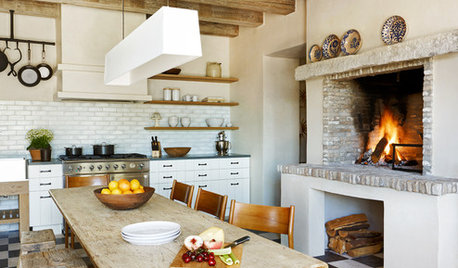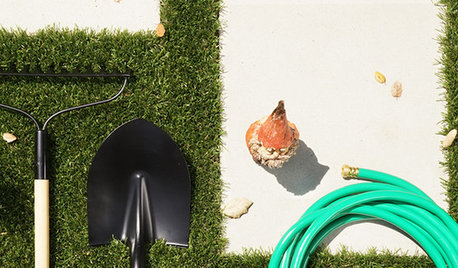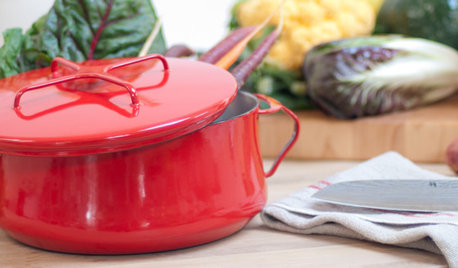Favorite feeding products?
Linda Ricketts
13 years ago
Related Stories

GARDENING GUIDES8 Native Shrubs for Year-Round Bird Feeding
It’s not just about berries. These plants provide insects for birds and seasonal interest for gardeners
Full Story
HOME TECHTo Feed and Protect: Care for Your Pet From Afar With New Devices
You might miss the nuzzles, but your dog or cat won't miss food, water or monitoring with these high-tech feeders and cameras
Full Story
GARDENING FOR BIRDSFeed the Birds: 6 Plants for Abundant Winter Berries
Be kind to your fair feathered friends during lean food times by planting a shrub or tree loaded with nutritious snacks
Full Story
GARDENING GUIDES15 Native Flowers That Feed Native Bees
These perennials offer superfood to hundreds of bees and are gorgeous in their own right
Full Story
KITCHEN DESIGN8 Fireplaces to Feed Your Kitchen's Style
It's easy to find good kitchen help these days — these fireplaces help you cook, provide focal points and create delicious warmth
Full Story
SHOP HOUZZShop Houzz: Our Favorite Personal Wellness Products
Take care of yourself with these picks made for comfort, healing and relaxation
Full Story0

SHOP HOUZZHouzz Products: Spring in the Garden
Have even more fun in the garden this spring with handy potting benches, outdoor accessories and tools from the Houzz Products section
Full Story
SHOP HOUZZHouzz Products: Stock Your Kitchen for Autumn
Serve hearty meals with a side of style by gathering up these fall-perfect pots, linens, serving pieces and kitchen tools
Full Story
SHOP HOUZZHouzz Products: Create a Cat Heaven at Home
Show kitty you care and keep your style too with fun and cozy cat beds, perches, trees and decor
Full Story
SHOP HOUZZShop Houzz: May Bestsellers
Houzzers’ favorite indoor and outdoor home products from May
Full Story0
Sponsored
More Discussions







spedigrees z4VT
ginny12
Related Professionals
70037 Landscape Architects & Landscape Designers · McKinney Landscape Contractors · Burien Landscape Contractors · Cincinnati Landscape Contractors · Duarte Landscape Contractors · Essex Landscape Contractors · Lemay Landscape Contractors · North Richland Hills Landscape Contractors · Plainview Landscape Contractors · Secaucus Landscape Contractors · South Lyon Landscape Contractors · Tehachapi Landscape Contractors · Four Corners Landscape Contractors · Centreville Decks, Patios & Outdoor Enclosures · Saint Louis Park Decks, Patios & Outdoor Enclosuresdiggerdee zone 6 CT
mad_gallica (z5 Eastern NY)
houstworks
NHBabs z4b-5a NH
Linda RickettsOriginal Author
suenh
NHBabs z4b-5a NH
prairiemoon2 z6b MA
spedigrees z4VT
Linda RickettsOriginal Author
prairiemoon2 z6b MA
diggerdee zone 6 CT
mad_gallica (z5 Eastern NY)
prairiemoon2 z6b MA
diggerdee zone 6 CT
prairiemoon2 z6b MA
diggingthedirt
prairiemoon2 z6b MA
diggerdee zone 6 CT
prairiemoon2 z6b MA
spedigrees z4VT